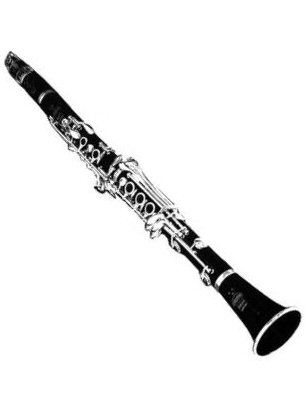
-
The clarinet was developed from an instrument called the chalumeau, similar to a recorder, with the exception of a single reed. It had eight finger holes and two keys for its higher notes, and had the range of an octave and a half.
-
At the turn of the 1700’s, it was changed by Johann Christoph Denner who modified one of the keys into a register key. It was named the Clarrinetto, which translates to little trumpet. While in the early stages of production it only played well in the middle signature, once it began to be more developed it replaced the chalumeau (which had been used for the lower register before). It could play two keys and a chromatic scale. Other makers began to add keys and by Mozart’s time it had around five keys to accompany the eight finger holes.
-
Mozart did write an abundance of music for clarinet, as it began to gain popularity, and by Beethoven’s time, it was standard in orchestras. These clarinets were usually Bb or A clarinets.
We have learned that a prominent instrument of the Baroque period was the harpsichord, an anscestor of what we now know as the piano, or pianoforte.
It is not known exactly when the pianoforte was first invented, but it is widely accepted that it was invented by the Italian Bartolomeo Cristofori around 1709.

The piano was founded on the mechanisms of the harpsichord and clavichord. While all in the keyboard family, the pianoforte and clavichord have strings that are struck, while the harpsichord has strings that are plucked. In working with clavichords and harpsichords, Cristofori discovered that in an instrument with struck strings, the hammers must strike the string but not stay in contact with it so as not to dampen the sound. He also determined that the hammers must not return to starting position in a violent manner, and a player must be able to repeat a note rapidly.
Though much quieter than today's pianos, Cristofori's early piano was much louder and dynamically versatile than the clavichord.
The damper pedal found on today's pianos was added by Gottfried Silbermann around the 1730s.
Piano-making flourished in the late 18th century, and a Viennese style piano was developed. The pianos of this time are referred to as fortepianos. They had a softer, clearer tone than today's pianos, with less sustaining power.
The development of the piano was influenced by performers' and composers' preference for powerful sustained sounds, and the industrial revolution. The strings and frames of the piano were improved upon and the tonal range extended.
The Orchestra!

The classical orchestra normally contained two flutes, two oboes, two clarinets, two bassoons, two trumpets, two horns, two tuimpanis, three basses, six cellos, six violas, nine first violins, and nine second violins.